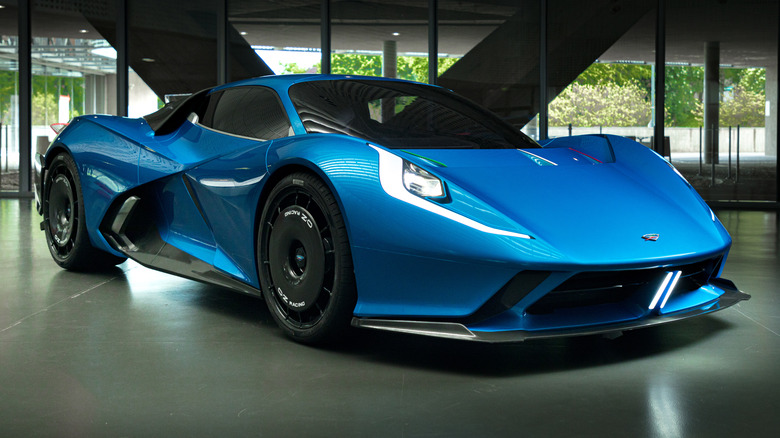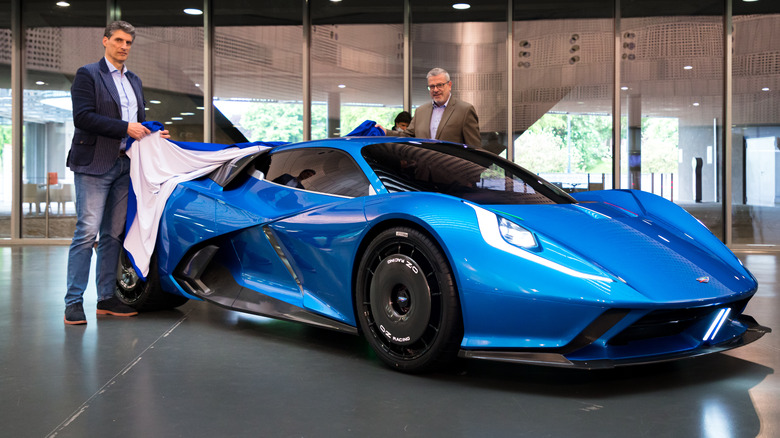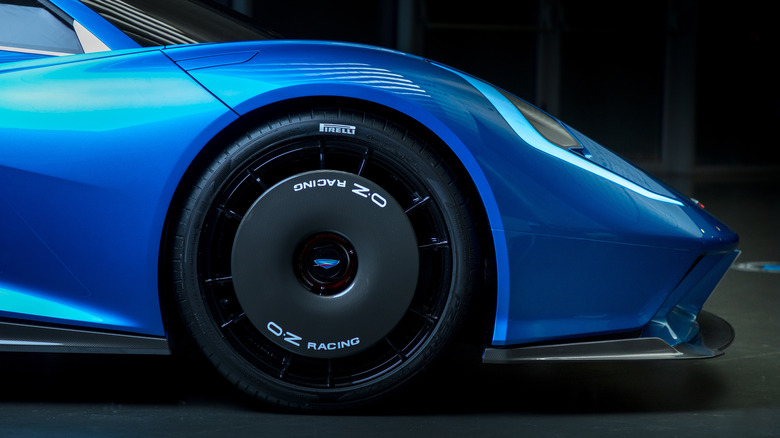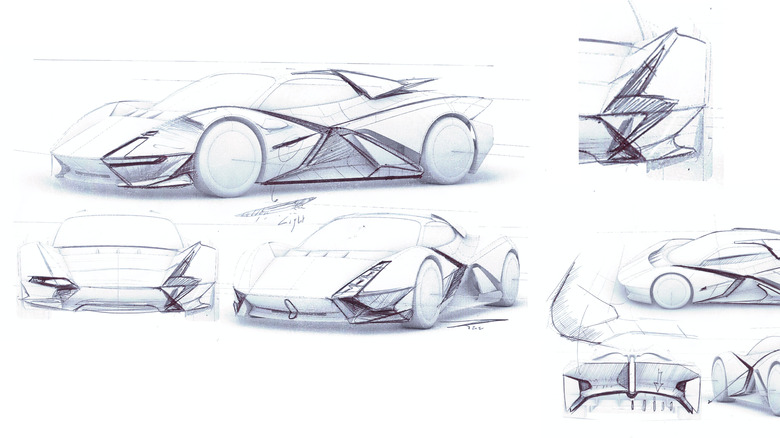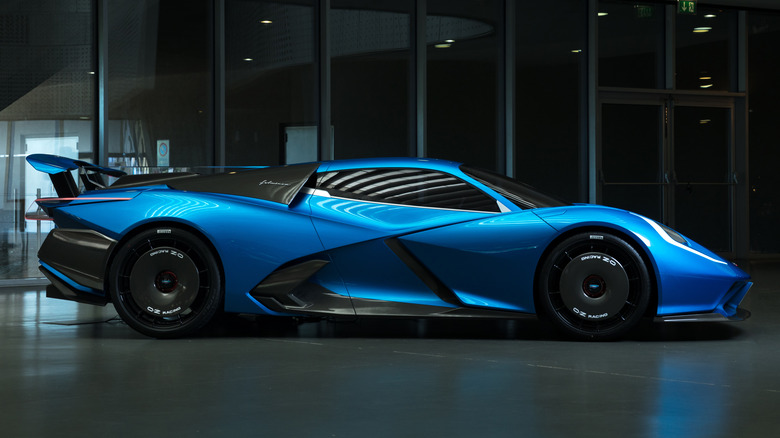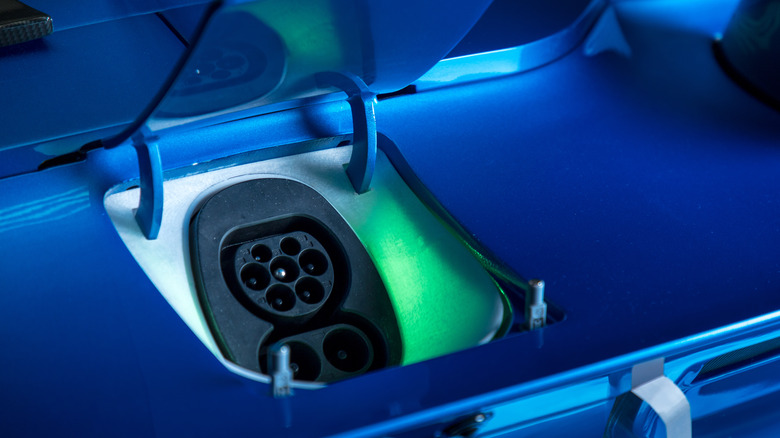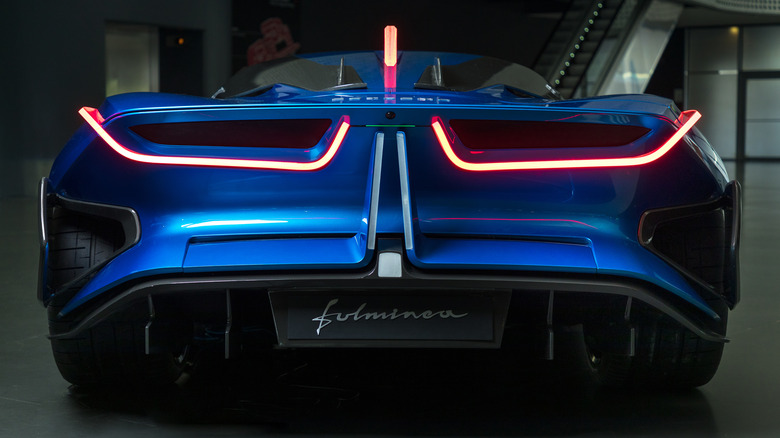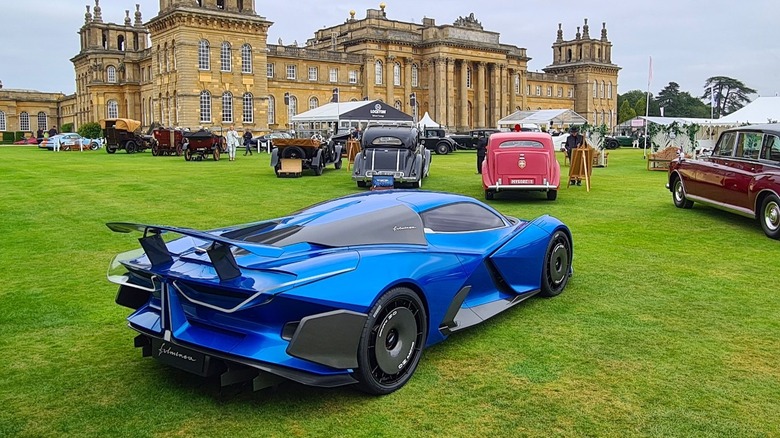The Story Behind Estrema's 2,000 Horsepower Electric Hypercar
Over the past few years, electric vehicles have gone from a niche idea involving a few companies who catered almost exclusively to enthusiasts, to a booming market set on driving automotive technology forward. Almost every major vehicle manufacturer is offering EVs to its customers, and infrastructure is springing up to make electric vehicle ownership practical. This is on top of the fact that a modern electric vehicle offers far more than fuel economy and environmental benefits. At the high end, companies like Tesla, Lucid, and McMurty are pushing the limits of performance, power, and speed.
One EV startup is looking to make its debut right at the top of the tree. Italian company Estrema is hoping to blend the beauty of a classic sports car with the boundary-pushing power electric vehicles can offer. Their upcoming vehicle, the Fulminea, is a statement of intent which reflects the company's ideologies and background. It will have a total of 2,040 horsepower, be capable of going from 0 to 60 in less than two seconds, and hit 200 miles per hour in less than ten. A single charge can take the car over 320 miles, though it isn't designed for touring. The owners recommend a brief trackside fast charge to provide hour-long bursts of racing fun. The electric hypercar will truly be at its best on a closed circuit.
It's a proudly Italian car
The name Fulminea itself means "lightning fast" and is a play on both the car's incredible level of performance and its electrical power source. The company's crest features the colors of the Italian flag, and the cars featured in Estrema's promotional pictures are all painted Azzurro Savoia, or "Savoy Blue" — a color you'll also find Italy's sports team clad in. Estrema is a true Italian company at its heart and that heritage seeps into everything it does. SlashGear spoke to Gianfranco Pizzuto, the company's founder and CEO, to get an in-depth picture of the upcoming hypercar. It turns out that creating a true Italian vehicle was the core focus from day one. Pizzuto says:
"Some of the best designs of all time were made in Italy in the '60s. You look at the Lamborghini Miura, or the Alfa Romeo 33, or the Ferrari GTO, and any of these cars are considered to be the most beautiful cars in the world. If you want to purchase one, you need very deep pockets. I would say that we took the heritage of the design proportions and lines of the Italian sportscars of the '60s.
I told my designers that I wanted the car to be immediately recognized as an Italian sportscar and the benchmarks were the cars I've mentioned before. I think that you can easily find some similar design lines in our today's Fulminea. As a child, these were the cars I was dreaming about."
Pizzuto also has another Italian company in his sights while looking to Estrema's future, believing that one day his hypercar manufacturer will be on par with Pagani, another lauded Italian manufacturer.
Two options, without much performance difference
Italy is also a complex country, which isn't surprising considering it is actually a few nations that were welded together by a man called Garibaldi a couple of centuries ago. This is considered in some ways, too, as the convertible Fulminea has been christened the "Verta," a word which comes from the Venetian dialect. Though Pizzuto explains his reasoning may have been a touch simpler: "We decided to call it Verta because it's cooler, and it's very easy to spell."
Usually, when a car loses its top, a lot of rigidity goes with it. Replacing an expertly crafted roof with a large hole also does the car's aerodynamics no favors, and the increased drag can really impact both acceleration and top speed. However, this is another area where Estrema's debut vehicle may stand out. If you want to go topless through the Italian countryside in your electric hypercar, you might not notice much of a performance difference at all. Both editions of the vehicle feature a carbon fiber cab and there is only around a 3mph difference between the convertible and coupe versions.
The electric hypercar will feature come cutting-edge engineering
Although electric vehicles still have some disadvantages, the level of performance they offer in some areas puts them in a class of their own. Acceleration is one area where high-end electric cars consistently leave their conventional equivalents in the dust. It will be no different with the Fulminea. "From 0RPM you have all of the torque available, you don't need to shift gears," Pizzuto explained. The insane level of torque and organ-disrupting acceleration also has to be accounted for in other areas of the car, and as a result, it may not be the most comfortable ride of your life — even if it is the most exciting one: "With the acceleration, with the 0-60 mph in less than two seconds, you have to be very stable."
Traditional sports cars haven't just inspired the styling. Concepts like weight distribution, which massively affects handling, have carried over too. "We placed the battery pack right behind the driver's and co-driver's seat, like a mid-engine mount kind of architecture in traditional ICE sportscars, this is ideal since it helps us to have the perfect weight distribution of the vehicle.
The ultracars are packed with the power electronics in the tunnel between the seats, this is another great position which is helping us to keep the center of gravity as low as possible. The toughest challenge was to design the routing of the High Voltage cables (800 Volts architecture) and the cooling system, but the compact design of the battery pack helped us a lot"
The Fulminea is a combined effort
Pizzuto's biggest asset may be the connections he has made during his decades in the automotive industry. Over the last 30 years, the contacts Pizzuto has made are such an advantage for his fledgling company that the founding of Estrema may be the electric vehicle equivalent of Steve Wozniak launching a tech startup. A lot of the advantages come on the supply side, but Pizzuto doesn't see the companies he works alongside as suppliers: "They aren't suppliers, they're partners. I've said from the beginning that we don't need suppliers, we need partners. I can't afford suppliers. We do some pull marketing, and this is something we give back."
These "partners" will be contributing heavily to the vehicle. Most of the car's major components, including the motors that will give it its record-breaking horsepower, and the batteries those motors will draw from. This, according to Pizzuto, is the best and most practical solution. He says: "Having a network allows you to ask for components that not everyone can have. There are so many good manufacturers making electric motors that I don't have any reason to make motors myself. It would be too expensive. So we use motors from McLaren. They just developed a very light silicone carbide-based inverter, it weighs around five kilos, and when it's placed on top of the motor the full thing weighs 35 kilos."
The majority of Pizzuto's 30 years in the business have been spent around electric cars, and watching that market grow from the inside has instilled a strong belief in the concept: "I've been in the electric car business since 2007. I remember back in those days you only had a few manufacturers in the EV business, and now it's a totally changed world."
There really is a staggering amount of power on offer
Another upcoming car, the Koenigsegg Jesko, promises up to 1,600 horsepower while using high octane fuel. The Fulminea, with its batteries, motors, and inverters, is going to have about 440 more ponies than that. Designing a car with that amount of power is no easy task — and producing the power is only half the battle. There's actually an incredible amount of engineering involved in transferring force from the motor to the road. Theoretically, you could put a 22,000 horsepower boat motor on a flatbed and hook it up to the wheels. However, instead of producing enough power to send you back to 1955, you'll probably wind up with a pile of shrapnel instead of a transmission and any power that does somehow get to the wheels will turn the tires into dust.
Again, this is where Pizzuto can call on his contacts and experience. "Thankfully our power train partners are helping us fulfilling these tasks. We have a very sophisticated software which is managing the torque vectoring individually on each single wheel and e-motor," he explains. The software and the technology it is powering allow the Fulminea to push the limits instead of just disappearing in a cloud of tire smoke on the starting line.
It's road-legal, but not at its best there
You will be able to take Estrema's car on the road, whip around the countryside, and sit in traffic in any major city while attempting to show off. But despite these technicalities, none of that is what the car is really meant for, nor is it where its creators believe it will be at its best. "It is a racing piece, it's not meant to be something you can spend thousands of miles riding in like a Mercedes S Class," Pizzuto tells us.
One of the vehicle's key features is its ability to hit 200 miles per hour in less than ten seconds. However, you're unlikely to be able to test that out without violating laws or wrapping your very expensive, very rare, electric hypercar around a tree. As Pizzuto explains: "There are not many places you can drive this fast. There are some stretches in Germany. But nowadays they are restricting the autobahns. If you really want to enjoy high speed you have to go on a track. It's more safe and it's more fun."
Luckily race tracks are also noticing the emergence of high-performance electric vehicles, and many are adding or have added fast charging facilities so their patrons can get a full day's racing in without having to limit their performance.
It could make you money
Cars can be an absolute money pit, but the automotive world isn't exactly normal. The truly expensive vehicles tend to be the daily drivers you get every last mile out of despite the fact that repair bills are piling up every month. Limited-run, ultra-high-end vehicles are on another level entirely. They're ridiculously expensive to buy new, and even more expensive second-hand. The McLaren F1 is an ideal example, and Pizzuto sees the Fulminea, another car McLaren is involved with, as a comfortable member of that club.
"You buy a Picasso, it's a painting. You can buy a poster for $50 and have a Picasso in your house, it's a copy. Someone that has the money wants to have the original and not just pretend to have something. I think it's very similar in our case with our car, they want it because it's a collectible. It's not something that's going to lose value over time, on the contrary, it will gain value because there are so few of them."
The Fulminea certainly has all of the key ingredients. Its run will be limited, its specs are staggering, and it will offer a class-leading amount of horsepower. It also has the right balance of looks, unique while still keeping within the ruleset that made classic Italian sports cars so beautiful. Either way, its creator seems content chasing his dream. When asked what made him roll the dice with Estrema, Pizzuto says: "My wife. After 15 years of working on different car projects, she convinced me that it was about time that I do "my" car company telling me that I have all the skills to make it happen. Without her, Automobili Estrema would not exist today. She is the most important person in my life."
